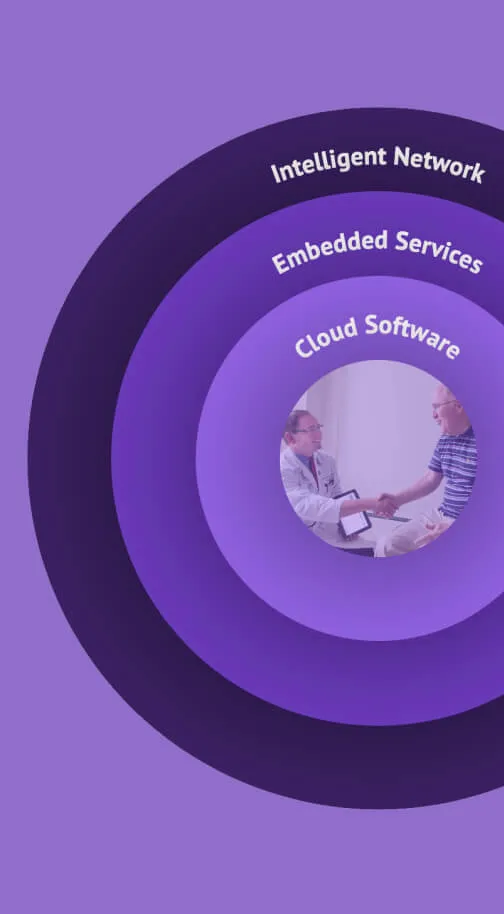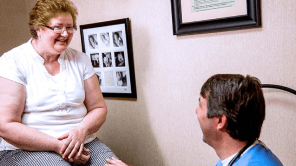Summit Health
Pre-visit chart prep streamlines operations, closes care gaps
Pre-visit chart preparation and a data-driven EHR help eliminate chasms in care, knowledge gaps
Labs and tests performed after patient encounters
Wait times to room patients
Controlling no-show rate
Lack of easy visibility into HPI during encounters
Access to data regarding services delivered out of network
Low patient schedule rates for referred services
athenaOne® including pre-visit chart preparation capabilities
Results
Patient portal adoption rate 97% above athenahealth network best practice rate helps clinicians share care summaries
Patient engagement tools decreases wait times at in-person appointments, shorter duration to room patients, and lower no-show rates. athenaOne enables increased follow-through for specialist appointments and ability to view lab results available to review before and during encounters.
Summit Health is not alone in wrestling with the Socratic paradox — “You don’t know what you don’t know.” But the organization is unique in trailblazing a path to rectify that. By implementing new workflows on top of athenahealth solutions to support care-gap closure and quality measurement, New Jersey-based Summit can continue to expand its decade-plus success in value-based contracting. Besides leveraging the best tools, it’s also about changing organizational culture, says chief quality officer Dr. Ashish Parikh. “We optimize the use of the EHR to our patient care and outcomes — making sure we manage an entire population, not just folks who come in.”
Summit’s strategy is two-fold: identify not only gaps in medical services that need to be delivered, but knowledge gaps about which services may have been delivered elsewhere. The organization is making great strides in their efforts to save time and concurrently improve care, he said. “One of the places we’ve struggled with is having people get their services performed outside of our universe and how to get that information” into the EHR, explained Parikh. “But that’s where getting everyone on a unified EHR as well as pre-visit planning have been very important for us.”
Changing the order of operations proves beneficial to clinicians, patients
Summit Medical Group and CityMD merged in August 2019 to form Summit Health, whose mission is improving access to high-quality coordinated primary, specialty, and urgent care. One of the key components of that coordination is the ongoing universal adoption of athenaOne, a cloud-based suite of clinical records, revenue cycle management, and patient engagement services.
Parikh says one of his “favorite innovations” is the clinical pre-visit chart preparation feature. “It really helps us close out those knowledge gaps, and those care gaps,” he said. A week before appointments, the clinical staff can review open gaps in care, like mammograms, eye exams, and A1c (HbA1c) hemoglobin tests for diabetes. Several types of gaps can be identified, and steps can be taken to try to close those gaps ahead of the visit. These include data gaps, to search charts for unstructured information (such as a faxed document) to see if results can be found and then entered in appropriate structured fields to close those gaps. Summit also focuses on information gaps, with outreach to patients to determine if services have been completed outside of the organization’s network. In these cases, relevant information can be obtained from outside clinicians and added to the medical record in a structured manner. “True care gaps” can be closed by ensuring that patients get needed labs ahead of their visit, such as A1c or lipid panels. For other gaps, orders can be added for provider review and sign-off at time of the visit (such as vaccines).
With previsit chart preparation, not only can care gaps be addressed ahead of the time, previsit documentation can be used to remind clinicians of concerns that a patient may want addressed at time of visit. Earlier access to information — and proactive reviews of that information — enables clinicians to better understand patients and the care they need, supporting better compliance to value-based care contracts.
Medical assistants can also perform screenings in advance. Select quality metrics like fall-risk evaluations, and tobacco use or depression screenings can be performed outside of an office visit; that not only increases adherence to meeting quality measures but means face time with clinicians is more productive. “We try to get all of that done in advance, so when the patient walks into the room, the medical assistant is not spending 10 minutes rooming them. They can quickly review the information that has been gathered during the previsit chart prep rather than spending time collecting this during the encounter. It’s much more efficient,” Parikh said. The downstream effect has been an increase in on-time appointments, and decrease in waiting room time at in-person appointments.
As a practicing physician, Parikh says he’s able to deliver better in-person care because encounters can be more focused. “You don’t miss things, because you’ve got the information on care received outside of Summit documented, screenings completed, and the preventative services teed up. As providers start addressing the patient’s chronic conditions and acute issues, they don’t miss the care gaps that also need to be addressed.”
In addition to chart prep by the medical assistants, Parikh says many Summit Health clinicians prepare charts by reviewing and/or prepopulating the HPI (history of present illness) with key issues that need addressing in advance to further enhance documentation efficiency during the encounter.
For chronic care patients in particular, changing the order of operations has been supremely beneficial. Outreach to get lab tests performed in advance of encounters means clinicians like Dr. Parikh can review the results during chart prep and then release the results to the patient portal with a note saying that he’ll discuss results in person. “That part patients love, so they know what to be prepared for. They know in advance if I’ll be scolding them about their triglycerides,” he joked. “The experience is also positive for physicians because it reduces me having to look at results twice because I’ve already added those items to my notes.”
Technology supports patient engagement and reporting requirements
Patient engagement and communications is a cornerstone in Summit’s strategy to continue expanding its participation in value-based care programs. A high level of portal adoption among patients – 97 percent above the athenahealth network best practice rate — helps clinicians share care summaries. “That high rate really helps out because portal communication is the best way to kind of make sure patients get their information in writing and can communicate back and forth,” said Parikh.
Encouraging portal adoption and use is just one component of how Summit Health staff are coached. Another is using functionality that allows clinicians to schedule labs, imaging, or specialist visits, for instance, before visits are closed in the EHR. That’s resulted in a higher follow-through rate and care gap closure rate. “Not surprisingly, only about 30 percent of the time does that plan actually gets closed if you leave it up to the patient to schedule it aft er they leave the off ice,” said Parikh. Previously, patients had to perform an additional action by calling clinicians’ off ices to schedule recommended services. Complementing these measures is the use of athenahealth automated reminders to clinicians to perform outreach to patients with overdue services such as annual wellness visits.
Other athenahealth technology – along with an ongoing, supportive partnership – makes reporting out on more than 140 quality measurements to payers increasingly more seamless, says Parikh. athenahealth’s Data View feeds into Summit’s analytics and business intelligence platform, as does payer data.
“We can see how well we’re doing, easily track data, and have it be sent to the payers in a structured fashion, or reported to payers. Equally important on our provider side, we are able to very easily surface quality measure performance to our providers, show them where there are care gaps, and how we can close those gaps,” he said. Analysts, and a team to act on what’s in those reports, complete the equation at Summit.
An organizational transformation that targets improved reporting
A transformation of Summit Health teams’ makeup is under way using a staggered approach with “pilot pods.” Select groups of clinicians are incrementally incorporating new workflows (including those that support initiatives like pre-visit chart prep). The move updates staffing ratios, patient ratio assignments, and changes to the physical plans of providers’ offices, said Parikh. The layouts allow clinicians to collaborate more with medical assistants and a 1-to-1 ratio of advanced practice providers for a more team-based model. Care coordination also includes a pharmacy team, social workers, and a quality team that tracks performance and makes outreach and education suggestions. Care navigators use athenahealth tools to run lists of patients who are overdue for services and recommends outreach to bring them in. And care managers partner with primary care providers to perform patient outreach and make sure they understand care plans — and adhere to them.
It’s all part of Summit’s “significant investment in population health” over the past decade says Parikh. “Our business strategy has been to continue to stay successful and busy in fee-for-service, continue to increase our patient population, and most importantly continue to drive towards greater value-based care. And our EHR really helps us out in all aspects of this strategy.”
He cited more precise risk stratification enabled by athenahealth as functionality that supports Summit Health’s long-term vision. “Based on claims and clinical data, now we’re able to restratify patients’ risk from 1 to 6 based on very healthy with no medical issues to chronic diseases or end of life,” Parikh said. “And that flag is now in athena for providers to use to determine the level of support a patient needs and how frequently they need to be seen.”
Parikh sees the continual improvement clinical workflows and optimal use EHR functionality as the “secret sauce” to achieving Summit Health’s goals of providing “ever better care, with ever fewer harms, at the an ever lower cost, with a great experience for patients, families, staff, and clinicians.”
We can see how well we’re doing, easily track data, and have it sent to the payers in a structured fashion — or reported to payers. Equally important on our provider side, we are able to very easily surface quality measure performance to our providers, show them which ones are satisfied, where there’s care gaps, and how we can close those gaps.
Dr. Ashish Parikh, Chief Quality Officer, Summit Health
*These results reflect the experience of one particular organization and are not necessarily what every athenahealth customer should expect.









